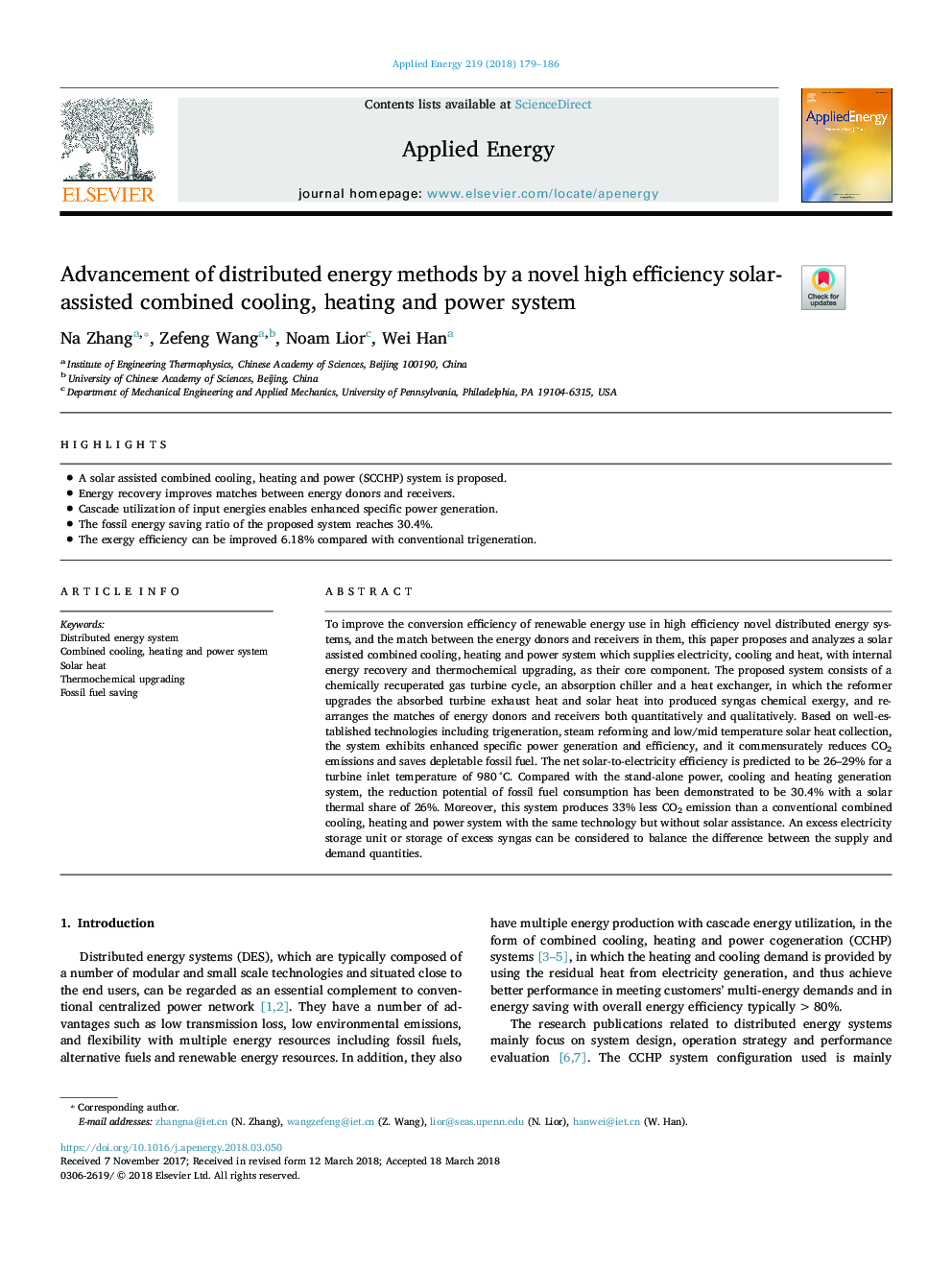| کد مقاله | کد نشریه | سال انتشار | مقاله انگلیسی | نسخه تمام متن |
|---|---|---|---|---|
| 6680288 | 1428071 | 2018 | 8 صفحه PDF | دانلود رایگان |
عنوان انگلیسی مقاله ISI
Advancement of distributed energy methods by a novel high efficiency solar-assisted combined cooling, heating and power system
ترجمه فارسی عنوان
پیشرفت روشهای انرژی توزیع شده با استفاده از سیستم خنک کننده، گرمایش و نیروی خورشیدی با بهره وری جدید با خلوص بالا
دانلود مقاله + سفارش ترجمه
دانلود مقاله ISI انگلیسی
رایگان برای ایرانیان
کلمات کلیدی
سیستم توزیع انرژی، سیستم خنک کننده، حرارت و برق ترکیبی، گرمای خورشیدی، ترمیم شیمی درمانی، ذخیره سوخت فسیلی،
موضوعات مرتبط
مهندسی و علوم پایه
مهندسی انرژی
مهندسی انرژی و فناوری های برق
چکیده انگلیسی
To improve the conversion efficiency of renewable energy use in high efficiency novel distributed energy systems, and the match between the energy donors and receivers in them, this paper proposes and analyzes a solar assisted combined cooling, heating and power system which supplies electricity, cooling and heat, with internal energy recovery and thermochemical upgrading, as their core component. The proposed system consists of a chemically recuperated gas turbine cycle, an absorption chiller and a heat exchanger, in which the reformer upgrades the absorbed turbine exhaust heat and solar heat into produced syngas chemical exergy, and rearranges the matches of energy donors and receivers both quantitatively and qualitatively. Based on well-established technologies including trigeneration, steam reforming and low/mid temperature solar heat collection, the system exhibits enhanced specific power generation and efficiency, and it commensurately reduces CO2 emissions and saves depletable fossil fuel. The net solar-to-electricity efficiency is predicted to be 26-29% for a turbine inlet temperature of 980â¯Â°C. Compared with the stand-alone power, cooling and heating generation system, the reduction potential of fossil fuel consumption has been demonstrated to be 30.4% with a solar thermal share of 26%. Moreover, this system produces 33% less CO2 emission than a conventional combined cooling, heating and power system with the same technology but without solar assistance. An excess electricity storage unit or storage of excess syngas can be considered to balance the difference between the supply and demand quantities.
ناشر
Database: Elsevier - ScienceDirect (ساینس دایرکت)
Journal: Applied Energy - Volume 219, 1 June 2018, Pages 179-186
Journal: Applied Energy - Volume 219, 1 June 2018, Pages 179-186
نویسندگان
Na Zhang, Zefeng Wang, Noam Lior, Wei Han,
